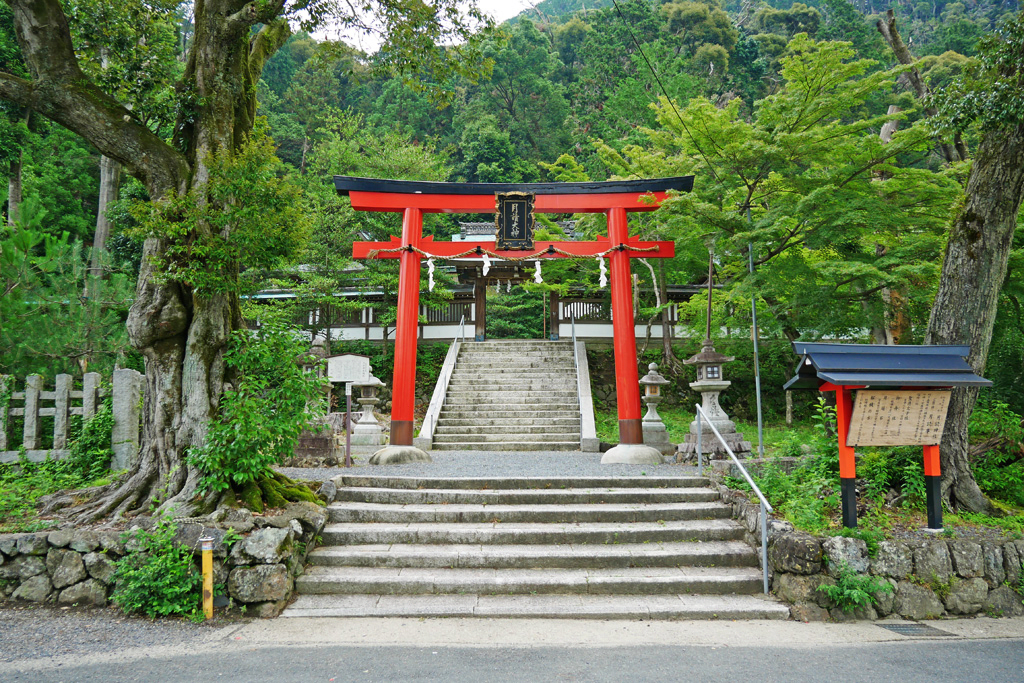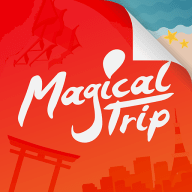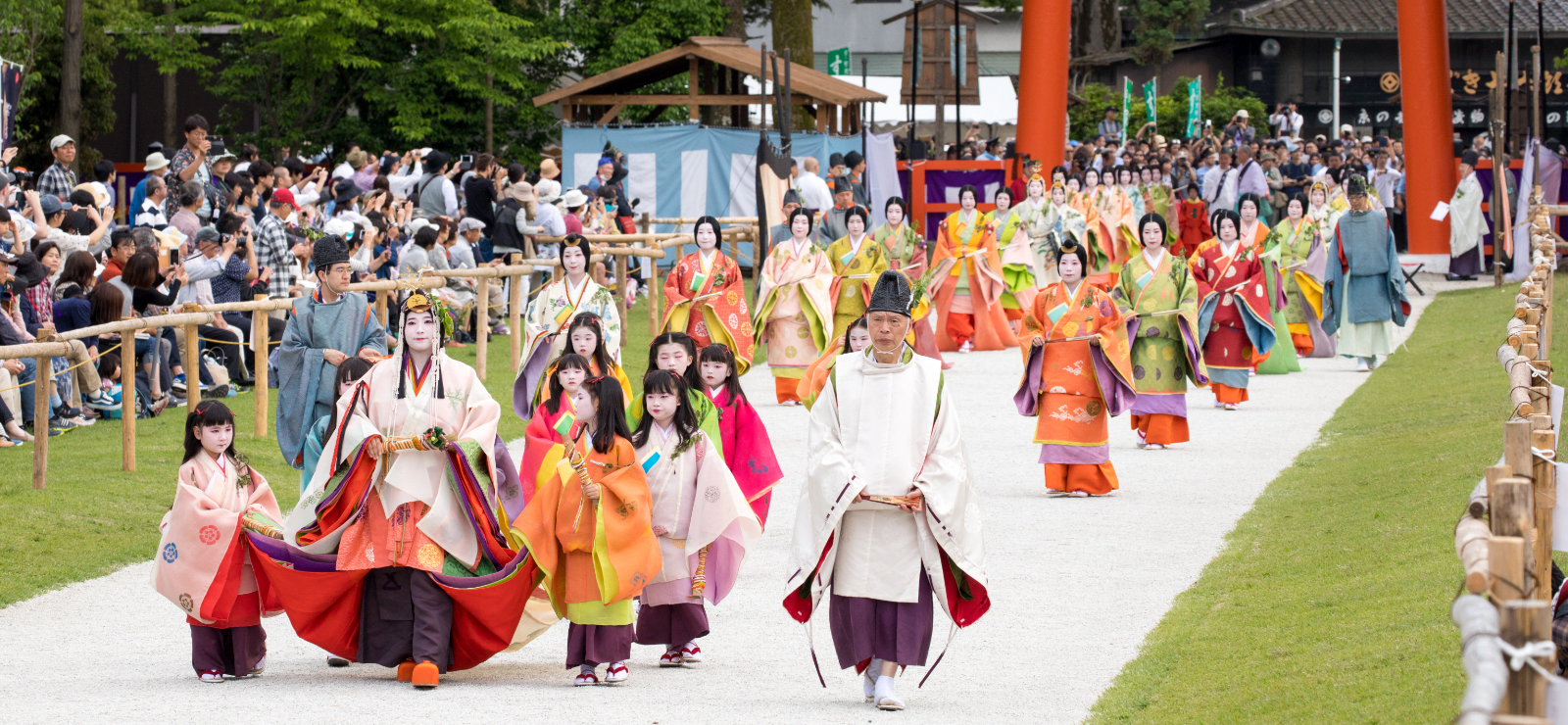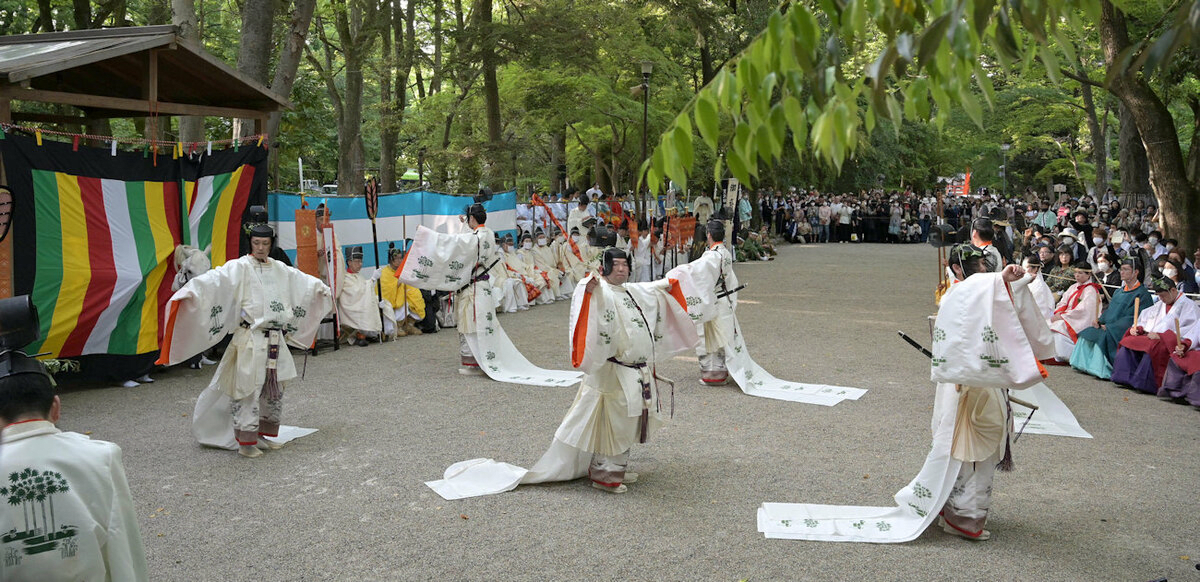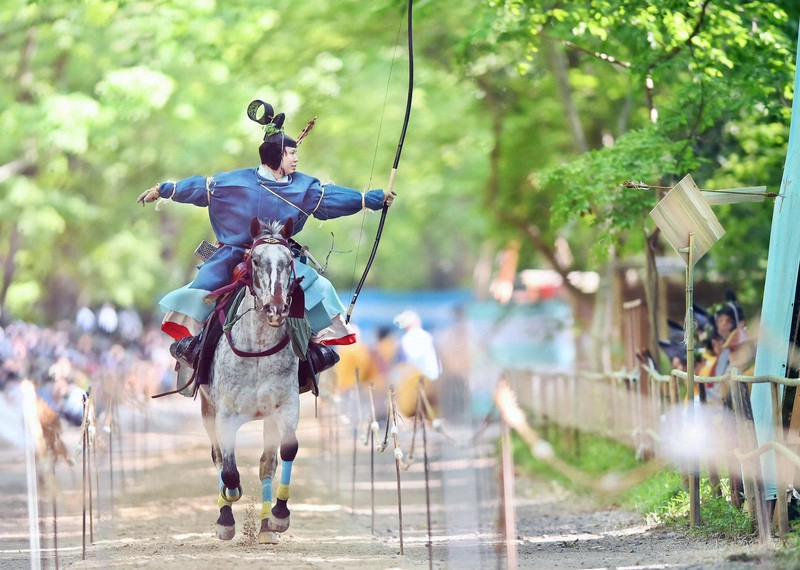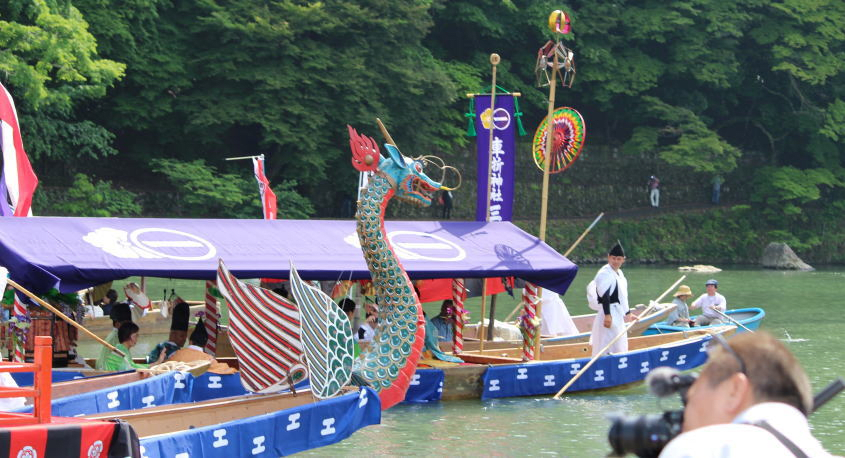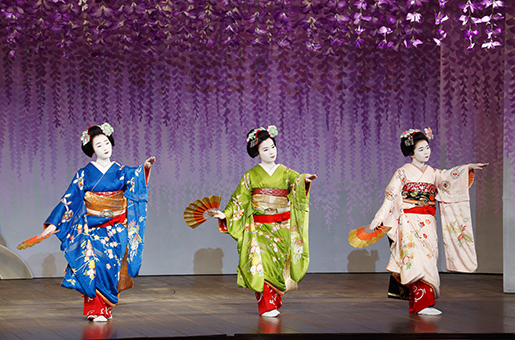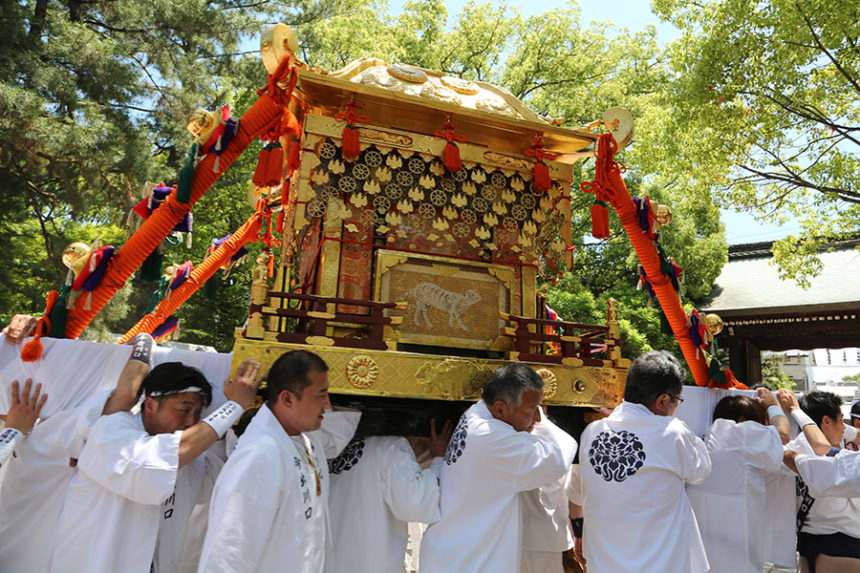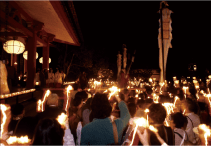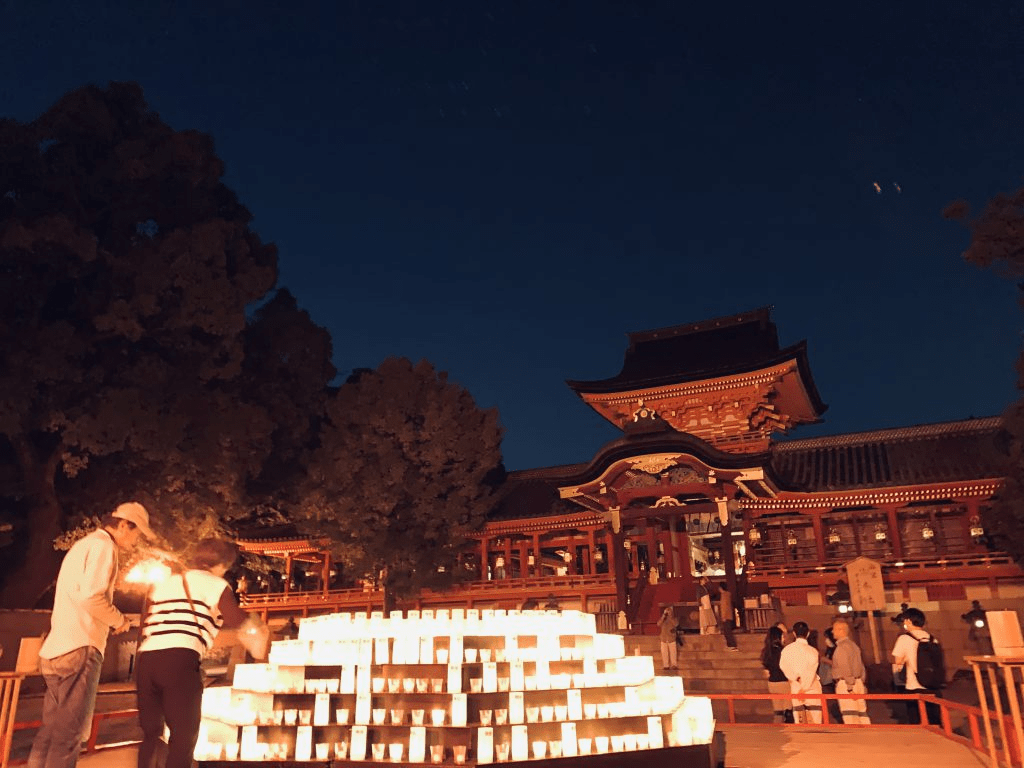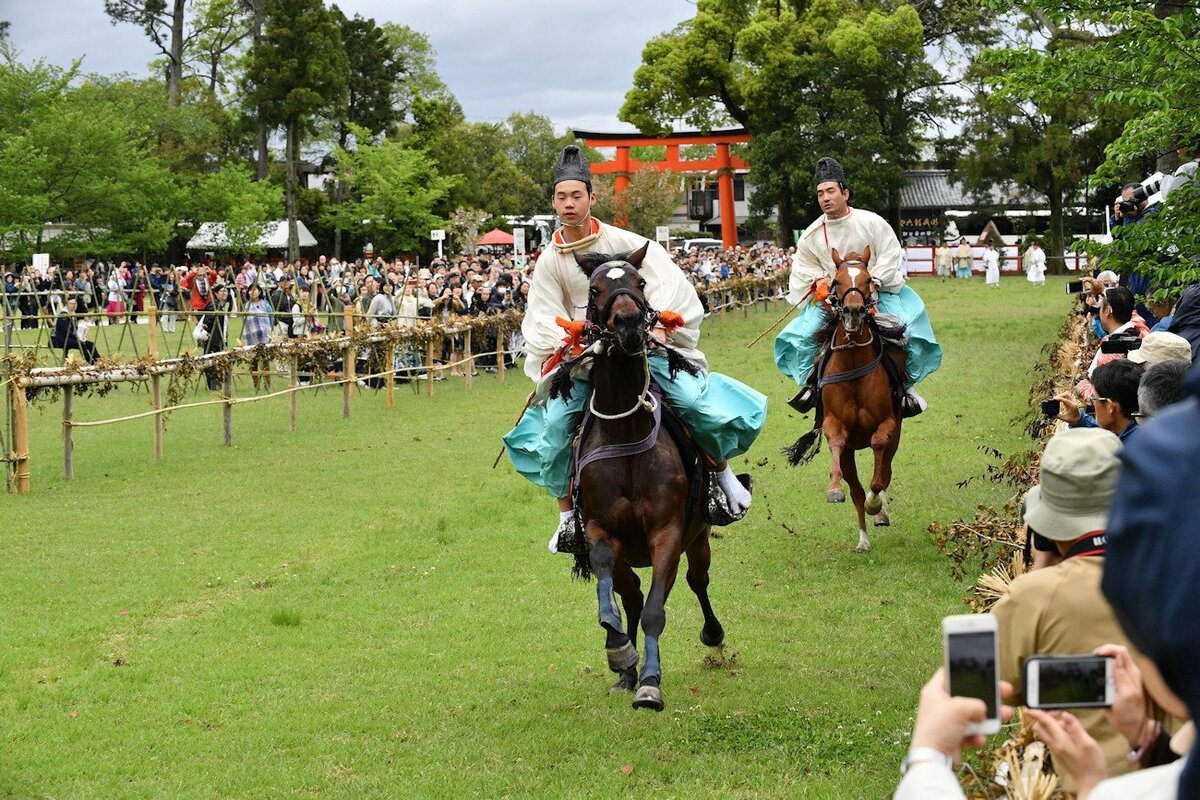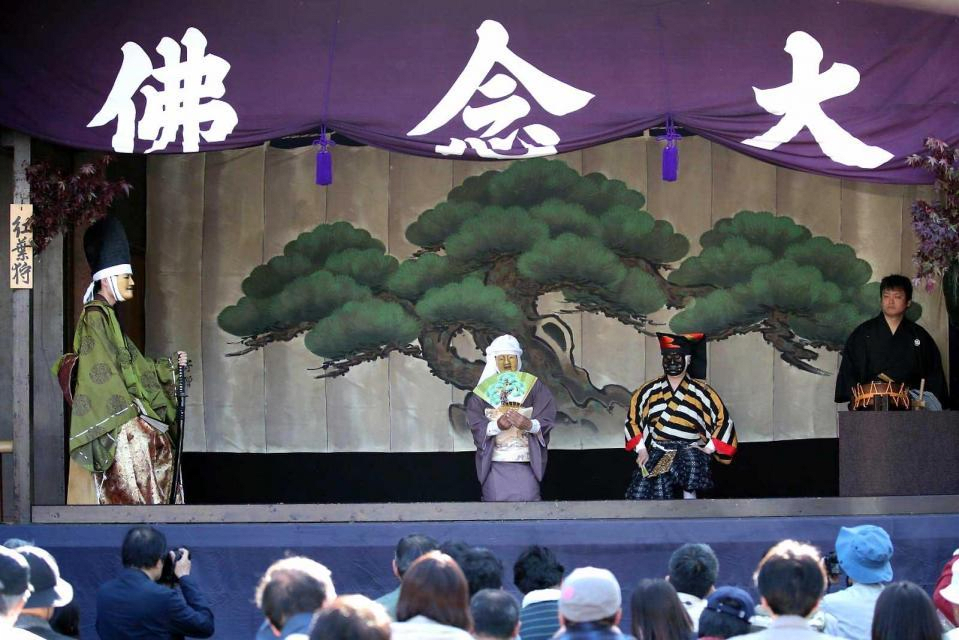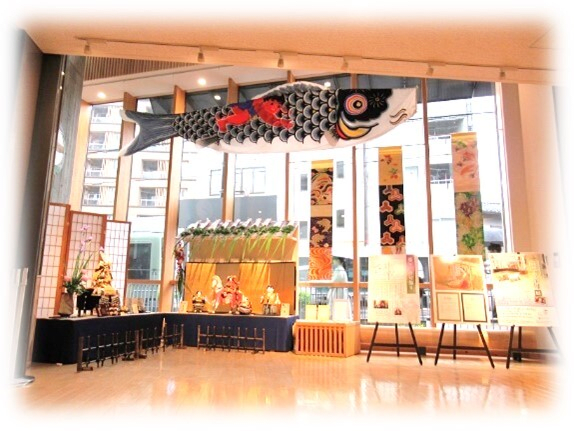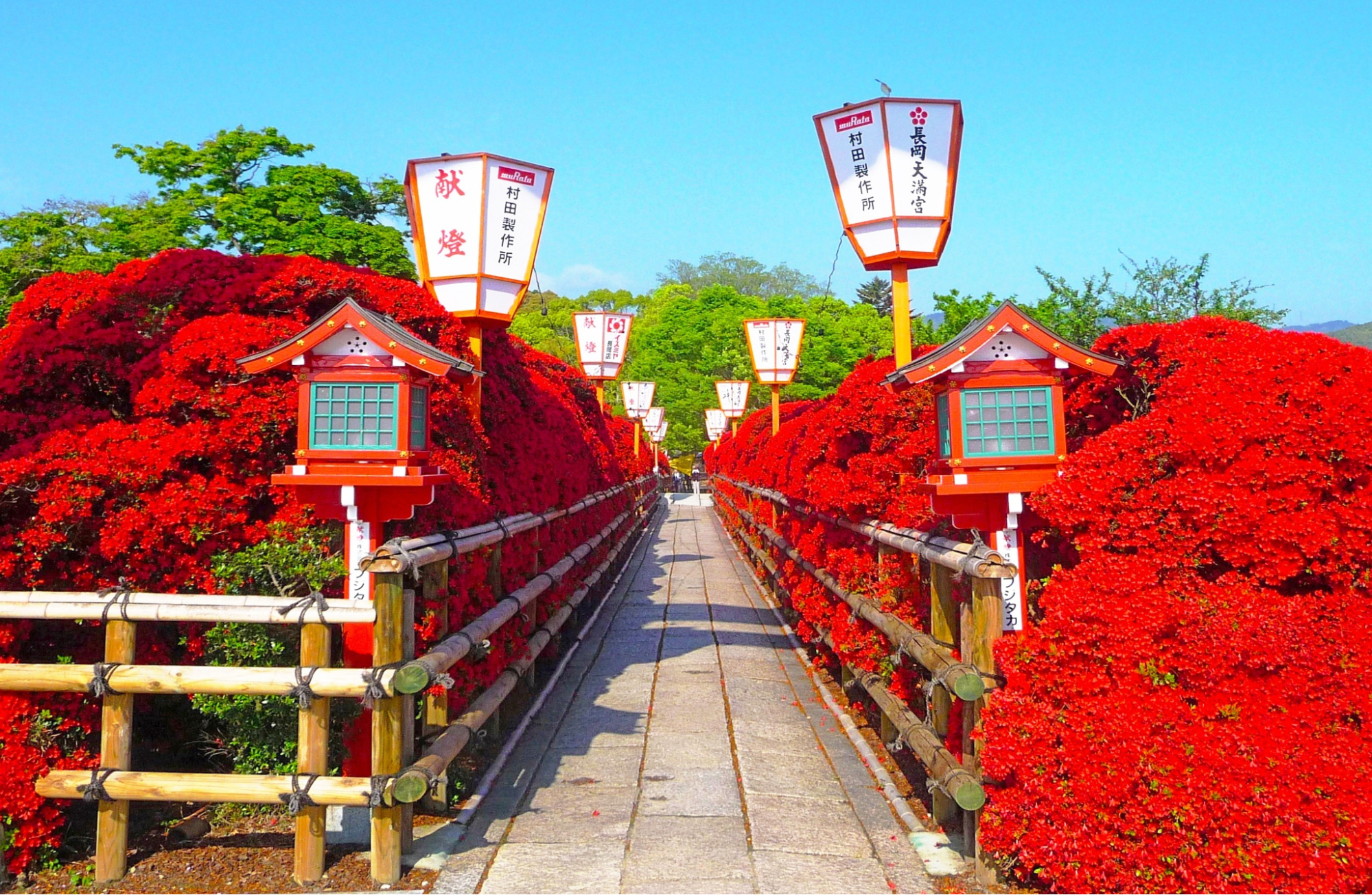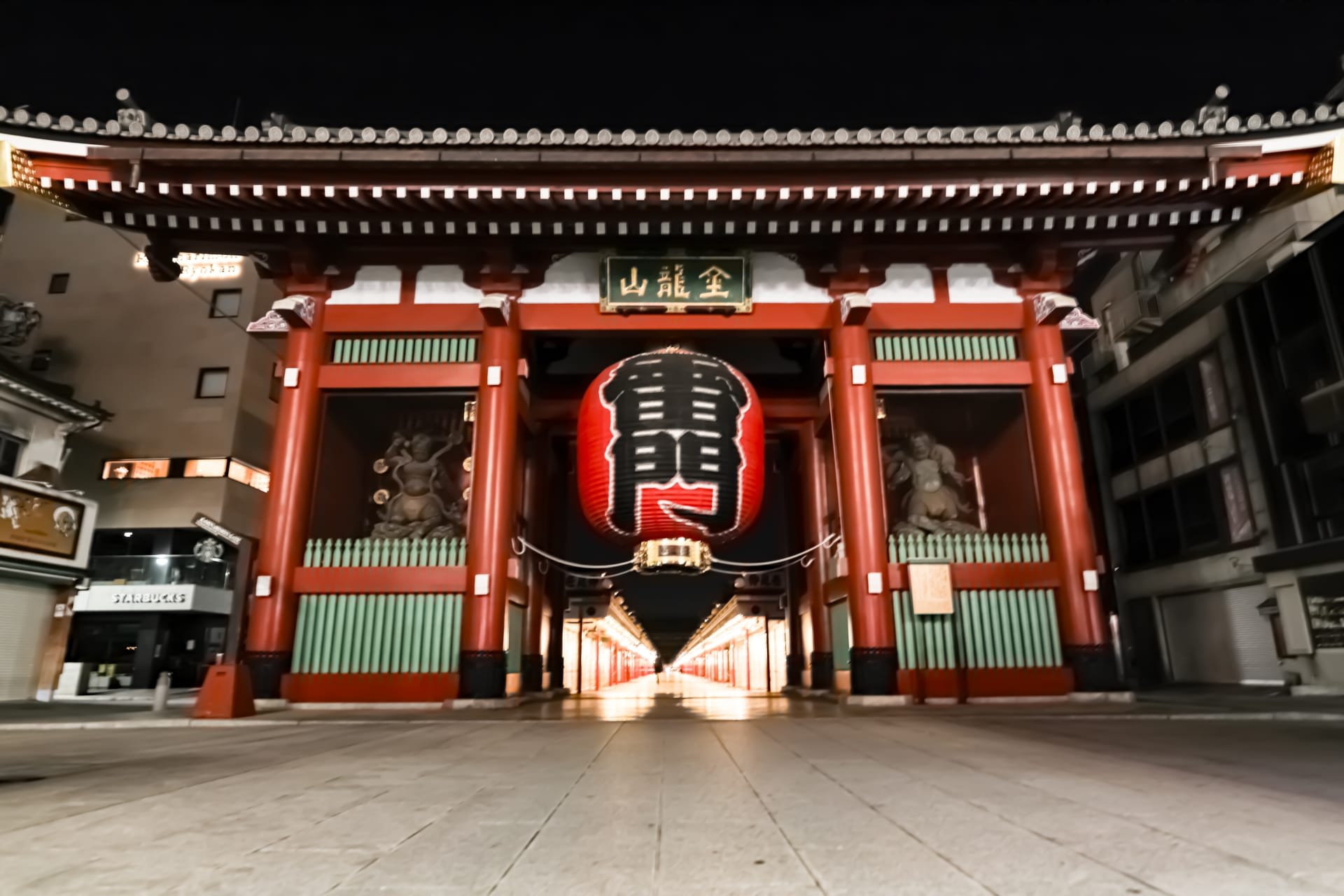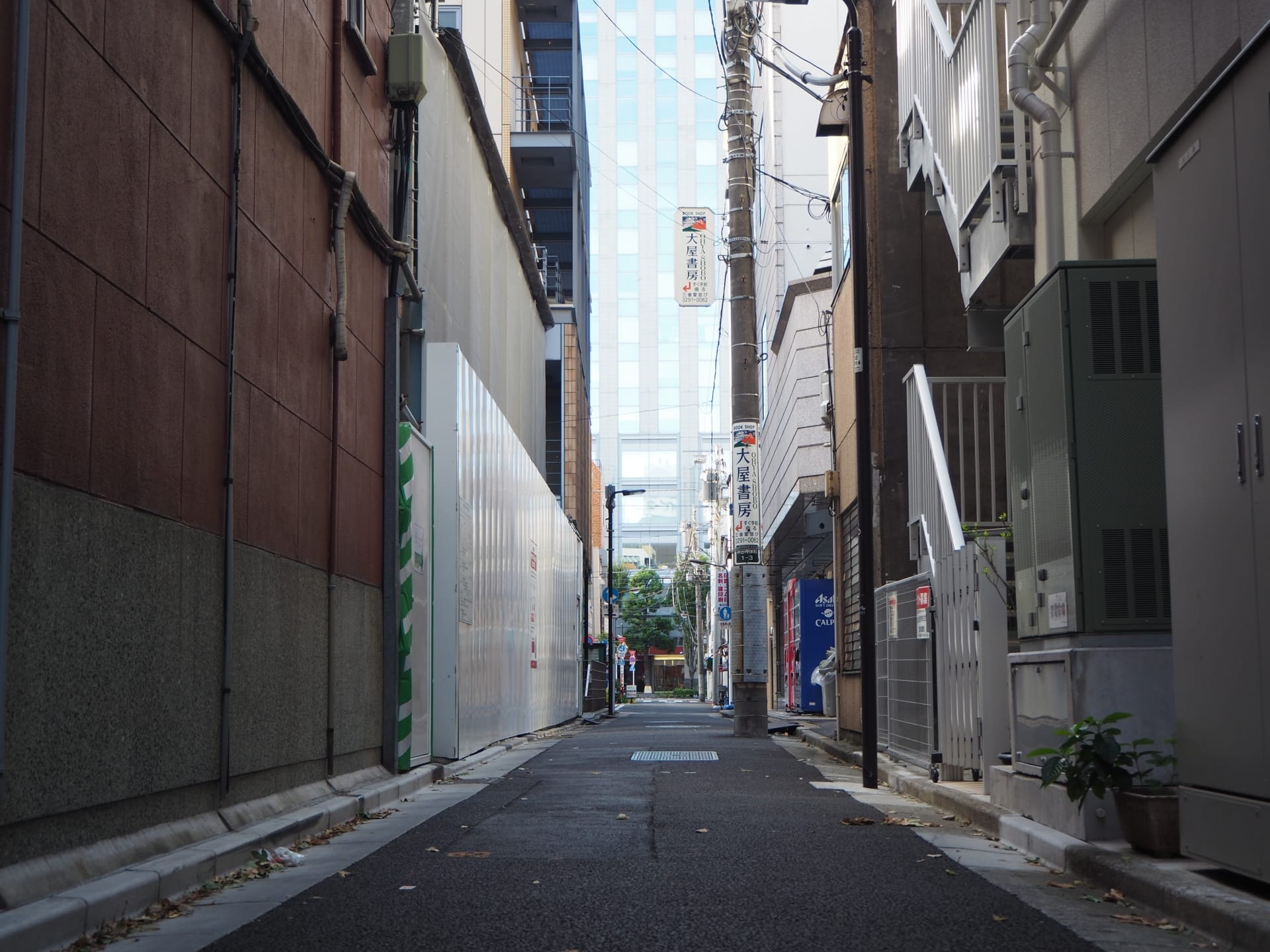Kyoto in May 2025: Highlights, Events & Festivals
Since its publication in August, this article has served as a guide for many international visitors planning their trips to Kyoto. Travelers considering a February visit have been using this article to incorporate events into their itineraries and explore tour options through Magical Trip.
We're updating this article now, as February 2025 approaches, to help visitors make the most of their Kyoto experience. We've improved the layout to make it more user-friendly, allowing visitors to easily check event locations and details while exploring the city.
Kyoto is a city where complex layers of culture and history intertwine, making it challenging for tourists to fully appreciate its historical sites and culture on their own.
At the end of the article, I'll also share my experiences with two tours I took during my visit to Kyoto between August and October: the "Kyoto Night Foodie Tour" (Ranked #6 among all tours on TripAdvisor in 2024) and the "4.5-hour Kyoto Historical Highlights Bike Tour with UNESCO Zen Temples," including their highlights and key features!

Introduction
In May, Kyoto begins to warm up as summer approaches. While daytime temperatures are warm enough for short sleeves, a light jacket is essential for cooler mornings and evenings. May offers one of the most pleasant climates in Kyoto's calendar, attracting numerous domestic and international tourists.
Kyoto, Japan's ancient capital, is a premier tourist destination known for its historic temples and shrines. The city's traditional streetscapes and cultural experiences make it particularly appealing to international visitors.
In May 2025, Kyoto hosts events that showcase traditional shrine ceremonies, seasonal experiences, and the harmony between tradition and nature.
2025 Year-round Event Schedule in Kyoto↓
・Kyoto: List of Events & Festivals for 2025
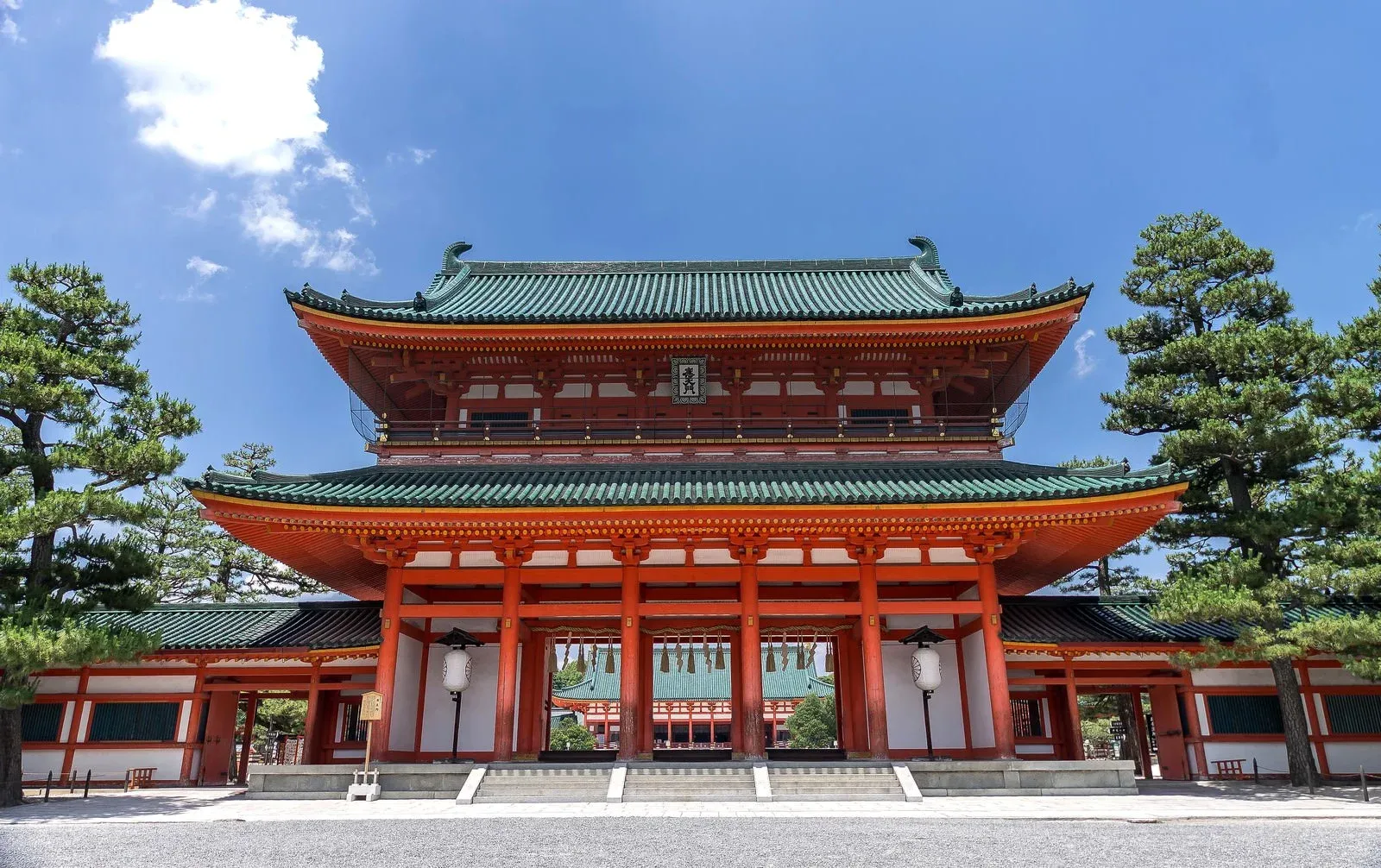
Traditional Events in Kyoto - May 2025
Aoi Festival
The Aoi Festival, jointly hosted by Shimogamo Shrine and Kamigamo Jinja, is a traditional ceremony dating back approximately 1,500 years, originally celebrating abundant harvests.
Historically, it was an aristocratic festival where nobles elegantly observed a grand procession of imperial messengers visiting both shrines. Today, the Aoi Festival continues as Kyoto's representative festival, preserving ancient traditions for future generations.
The festival's highlight is the "Roadside Ceremony," featuring a magnificent procession of about 500 people, including 36 horses and 4 oxen, parading through Kyoto's streets. The sight of people in traditional Japanese attire moving in unison creates an awe-inspiring atmosphere, transporting viewers back in time.
Various ceremonies begin about two weeks before the main event. These include Yabusame (horseback archery) and purification rituals where women in kimono cleanse themselves in shrine pond waters.
<Information>
Date: May 15, 2025
Access:
- From JR Kyoto Station: Take City Bus Route 4 or 205 to "Shimogamo Jinja-mae" bus stop (immediate walk)
- From Subway Kitaoji Station: Transfer to City Bus Route 1 or 205 to "Shimogamo Jinja-mae" bus stop (immediate walk)
Admission: Free (Reserved seating available for a fee)
Website: https://ja.kyoto.travel/event/major/aoi/
Don't Miss the Mikage Festival Preceding the Aoi Festival!
Source:Kyoto Shimbun
The Mikage Festival, a preliminary ritual, involves welcoming Shimogamo Shrine's divine spirit from Mt. Mikage.
According to tradition, the spirit travels to Shimogamo Shrine by possessing a horse, led by Shinto priests in procession.
After the spirit's arrival, witness the essential bugaku dance performed by priests in Tadasu no Mori, the shrine's ancient forest. Their graceful movements in traditional attire herald the sacred beginning of the Aoi Festival.
For those seeking a deeper appreciation of the Aoi Festival, participation in these preliminary events is highly recommended.
Yabusame Shinto Ritual
Source:Mainichi Shimbun
The Yabusame Shinto Ritual is a traditional ceremony held before the Aoi Festival. In this ritual, mounted archers shoot arrows at small targets while galloping on horseback—a tradition dating back to Japan's samurai era. Historically, Yabusame was performed to pray for world peace and abundant harvests; in this event, it's conducted to pray for the safety of the Aoi Festival.
The captivating highlight is watching the powerful Yabusame performance in the sacred atmosphere of Tadasu no Mori, where archers in samurai attire release three arrows in succession. The tension builds as spectators hold their breath before each shot, and successful hits are met with applause, creating a shared experience between archers and viewers.
This is a must-see for those interested in samurai culture and traditional martial arts.
<Information>
Date: May 3, 2025
Access:
- From JR Kyoto Station: Take City Bus Route 4 or 205 to "Shimogamo Jinja-mae" bus stop (immediate walk)
- From Subway Kitaoji Station: Transfer to City Bus Route 1 or 205 to "Shimogamo Jinja-mae" bus stop (immediate walk)
Admission: Free
Website: https://www.shimogamo-jinja.or.jp/saiji
Mifune Festival
Source:Official website
The Mifune Festival is a traditional event at Kurumazaki Shrine, known for its deity of performing arts. This festival recreates the entertainment popular among nobles over 800 years ago during the time of "Yorinari Kiyohara," the shrine's enshrined deity.
The festival features brilliantly decorated boats depicting dragons and birds floating on the usually tranquil Oi River, creating a mystical atmosphere like stepping into a storybook. Viewers can enjoy various traditional performances including bugaku (court music and dance) performed by kimono-clad artists and oginagashi (floating folding fans on the river).
This rare festival combines the grandeur of nature with Japanese traditional culture, making it unique even in historic Kyoto.
<Information>
Date: May 18, 2025
Access: 20-minute walk from Iwashimizu Hachimangu Station on Keifuku Electric Railroad
Admission: Free
Website: https://www.kurumazakijinja.or.jp/mifunemathuri2.html
Kamogawa Odori
Source:Official website
Kamogawa Odori began in 1872, three years after the capital moved from Kyoto to Tokyo, aiming to maintain Kyoto's prosperity by attracting tourists.
The performance features geisha in elaborate costumes and traditional makeup performing elegant dances. The show is divided into two parts: an elegant yet humorous "dance drama" and a formal "pure dance" typically performed in ceremonies. Each segment offers distinct atmospheres, allowing viewers to compare different themes and geisha movements.
Special tickets including traditional matcha tea ceremony before the performance are available.
<Information>
Date: May 1-24, 2025
Access:
- 5-minute walk from Exit 6 of Keihan Railway Sanjo Station
- 10-minute walk from Exit 1 of Hankyu Railway Kyoto-Kawaramachi Station
Admission:
- Regular seats: ¥4,000
- Special seats: ¥6,000
- Special seats with tea ceremony: ¥7,000
Website: https://www.kamogawa-odori.com/
Goryo Festival
Source:THE Kyoto
The Goryo Festival is a traditional ceremony to pray for peace and prosperity by pacifying spirits of those who died with grudges, believed to bring misfortune. The Goryo Festival at Goryo Shrine is historically the oldest among all Goryo Festivals held across Japan, attracting numerous visitors nationwide during its 18-day celebration in May.
The festival's highlight is the "Togyo no gi" on the final day, featuring a grand procession through Kyoto's streets with participants wearing traditional costumes passed down for over 1,000 years. Don't miss the "Mikoshi" - a decorated portable shrine carried on shoulders with powerful chants as it sways up and down. Highly recommended for those seeking to experience one of Japan's most historically significant traditional events.
<Information>
Date: May 1-18, 2025
Access: 3-min walk from Kurama-guchi Station (Municipal Subway)
Admission: Free
Website: http://www.kyoto-jinjacho.or.jp/shrine/02/004/
Uesaku-Sai
Source:Official website
Uesaku-Sai is a traditional ceremony at Kuramadera Temple held annually during May's full moon. Based on the belief that strong energy flows from heaven to earth during this time, prayers for world peace are offered to the temple deities.
During Uesaku-Sai, visitors carry lotus-shaped candles while offering silent prayers in a solemn atmosphere. Held in May when plants begin to sprout in Japan, it offers a healing moment combining nature and sacred ambiance.
Kuramadera Temple, situated atop Mt. Kurama is renowned as one of Kyoto's premier power spots. Remember to dress warmly as temperatures drop at night on the mountain.
<Information>
Date: Mid-May 2025 (Full moon night)
Access: 30-min walk or 2-min cable car ride from Kurama Station (Eizan Railway)
Admission: Free (Lotus candles available for purchase)
Website: https://www.kuramadera.or.jp/gyouji.html
Iwashimizu Toryoka
Source:YAWATA MARUGOTO NAVI
Iwashimizu Toryoka is a one-night event at Iwashimizu Hachimangu Shrine, Japan's third-ranking shrine dedicated to "Hachimanjin," the deity of military fortune.
The shrine, designated as a National Treasure, is notable for both its military fortune blessings and remarkable architecture. The shrine buildings combine ancient dynamic architecture with modern brilliant decorations, creating an overwhelmingly majestic atmosphere.
During Iwashimizu Toryoka, visitors can enjoy the shrine's illuminated architecture. Experience this mystical space where historic buildings emerge in the soft lantern light amidst the dark mountain nature.
<Information>
Date: Early May 2025
Access: Take the Cable Car from Hachimanguchi Station to Hachimangu Sangen Station (5-min walk), after arriving at Iwashimizu Hachimangu Station (Keihan Railway)
Admission: Free
Website: https://iwashimizu.or.jp/
Kamo Horse Racing Ceremony (Kamo Kurabeuma Ashizoroeshiki)
Source:Kyoto Shimbun
The Kamo Horse Racing Ceremony precedes the traditional horse race "Kamo Kurabeuma" held at Kamigamo Shrine on May 5th, 2025.
Established in 1093, "Kamo Kurabeuma" is considered the origin of Japanese horse racing. Two riders in ceremonial court music costumes compete for speed, praying for world peace and abundant harvests.
During the ceremony, they determine horse pairings and running order for the main race. Visitors can witness this powerful traditional horse racing demonstration featuring riders in authentic costumes.
Among Kyoto's many traditional events in May 2025, this unique horse racing ritual offers a distinctive experience worth attending alongside the main ceremony.
<Information>
Date: May 1, 2025
Access:
- 15-minute walk from Kitayama Station (Municipal Subway)
- Take City Bus Route 4 from Kyoto Station to "Kamigamo Jinja-mae" bus stop (immediate walk)
Admission: General ¥1,000 / Tent seats ¥1,500
Website: https://www.kamigamojinja.jp/hitotose/kamosai/#kurabeuma
Senbon Enmado Grand Nembutsu Kyogen
Senbon Enmado Dai-Nembutsu Kyogen is a unique form of Kyoto's Nembutsu Kyogen, a classical Japanese comedy.
Unlike most silent Nembutsu Kyogen performances, this May 2025 event features spoken dialogues. Performers wearing traditional kimono and masks engage in dynamic, comical movements, making it enjoyable even for non-Japanese speakers.
The performance showcases authentic traditional music using Japanese drums and flutes, characteristic of Kyogen.
This rare opportunity offers free admission to experience traditional Japanese performing arts, typically difficult to access even for locals.
<Information>
Date: May 1-4, 2025
Access: Take City Bus Route 206 from Kyoto Station to "Senbon Kuramaguchi" bus stop (immediate walk)
Admission: Free
Website: http://enmadokyogen.info/
Kyoto's Five Festivals and Annual Events
In Japan, seasonal purification ceremonies have traditionally been held in January, March, May, July, and September. At "Kyoto's five festivals and annual events" in May 2025, visitors can enjoy the Boys' Festival held on May 5th to pray for boys' growth, along with cultural exhibitions about Kyoto.
The Boys' Festival features carp streamers, symbolizing children overcoming adversity like carp swimming upstream, and warrior dolls representing hopes for strong growth like samurai. Visitors can see actual carp streamers and warrior dolls on display.
A highlight of this event is viewing Nishijin textile, Kyoto's premium silk fabric. Experience both traditional Japanese family customs and Kyoto's traditional crafts.
<Information>
Dates: Late April - Early May 2025
Access:
- Subway: Short walk from Imadegawa Station
- City Bus: Lines 51, 59, 102, 201, 203; get off at Kamigyoku Sogochosha-mae
Admission: Free
Website: https://www.city.kyoto.lg.jp/kamigyo/page/0000323825.html
Natural Beauty of Kyoto in May
Otokunidera Temple Peony Festival
Source:Nagaokakyo City
Otokunidera Temple, renowned for its peonies, hosts the annual Peony Festival during the peak blooming season.
During the Peony Festival, visitors nationwide come to see approximately 2,000 peony plants in full bloom throughout the temple grounds.
Otokunidera Temple features about 30 peony varieties, blooming in various colors including pink, purple, and white.
Founded approximately 1,300 years ago, Otokunidera Temple is one of Kyoto's oldest temples. It houses rare cultural treasures, including the oldest of Kyoto's three "single-day carved Buddhist statues" - a wooden standing Eleven-faced Kannon.
<Information>
Dates: Late April - Early May 2025
Access: Take Hankyu Railway to Nagaokatenjin Station, transfer to Hankyu bus, get off at Yakushido stop (5-minute walk)
Admission: Adults (High school and above) 500 yen / Children (Junior high and below) Free
Website: https://otokunidera.jimdosite.com/
